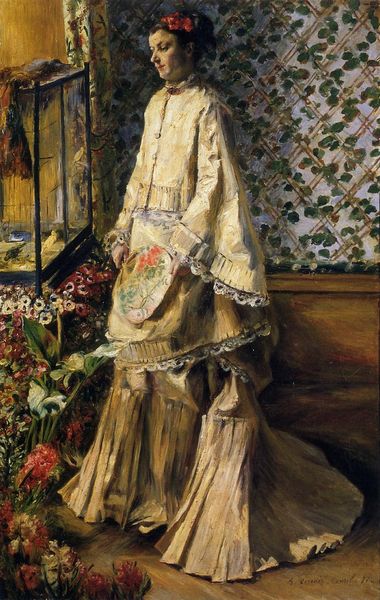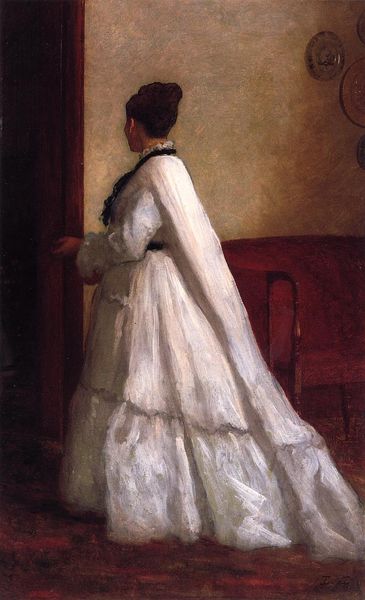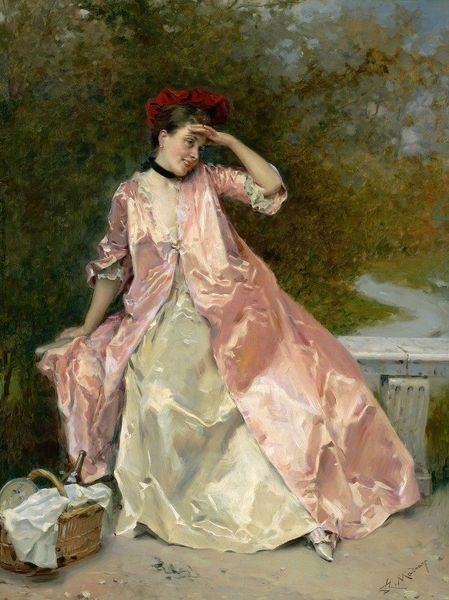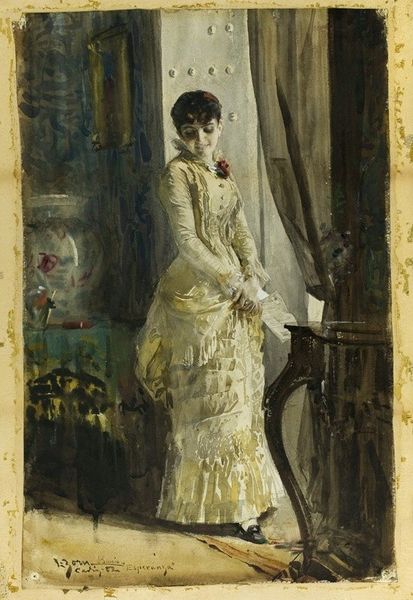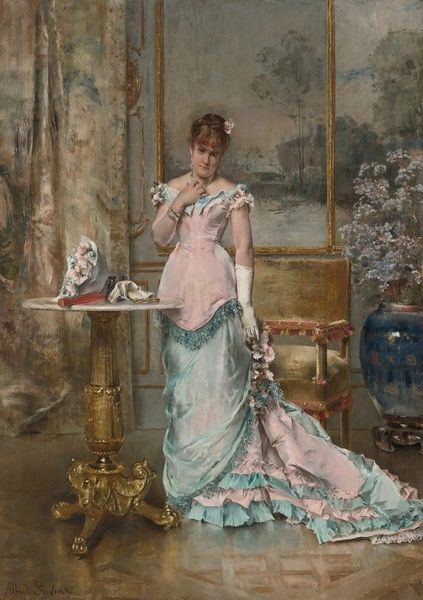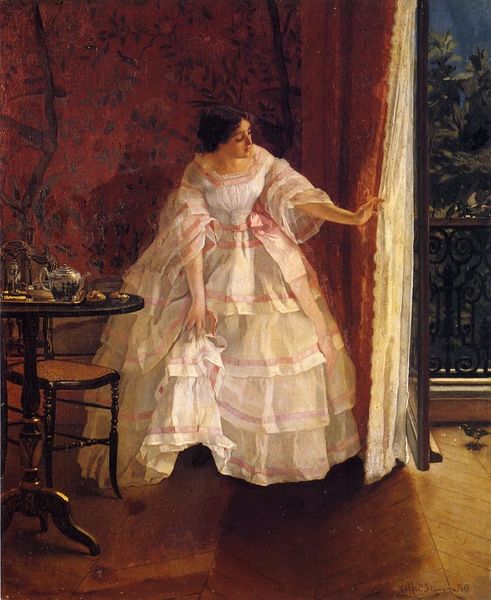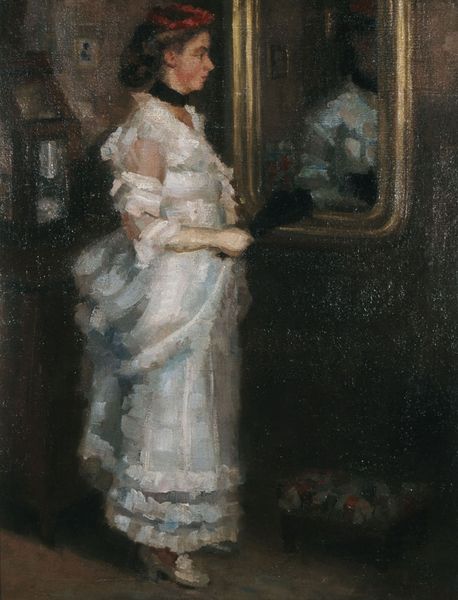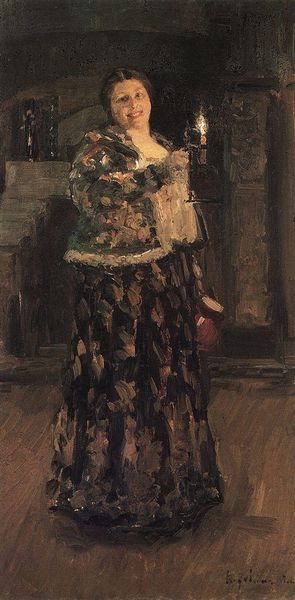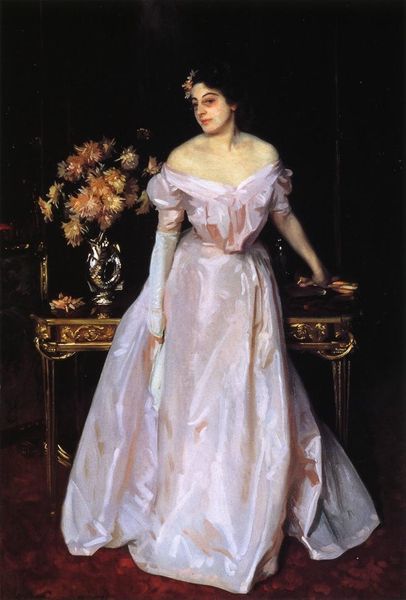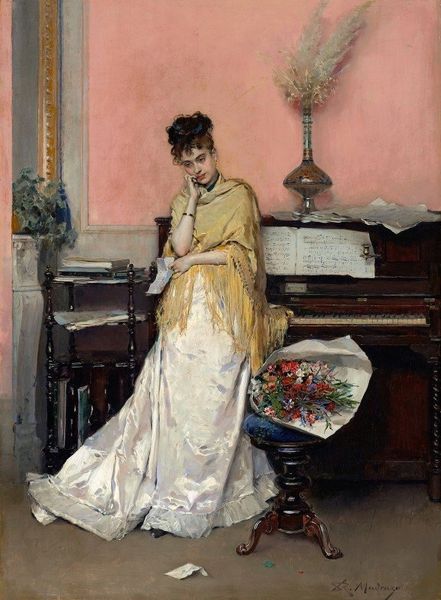
Copyright: Public domain
Curator: Today we will consider Rupert Bunny’s painting, “Returning from the garden,” created circa 1906, using oil on canvas. Editor: There's such a stillness to it; she's caught in this private moment, a world away from the societal expectations of women at the turn of the century. I feel like I am eavesdropping on a quiet reflection, with this soft color palette that really amplifies the sense of privacy. Curator: Notice how the composition emphasizes the mirror and her reflection. The formal elements, like the interplay of light on the dress’s folds and the patterned wallpaper, work to create layers of visual interest that speak to a world of artifice and domesticity. Bunny’s application of impressionist techniques results in brushstrokes with significant texture; in effect, these details demonstrate the constructed, painted surface that lies beneath any figurative interpretation. Editor: Absolutely, I agree; but doesn’t it also raise questions about women’s roles as domestic ornaments versus agents of change? This kind of intimate genre painting has historical precedents that confine women, their self-conception shaped by visual codes. Does Bunny reproduce that, or perhaps comment on it? Consider the very concept of "returning." From what is she returning, and what might that signify in light of gendered division? Curator: That might be inferred, of course, but what holds my attention is that interplay between reflection and reality. Look at the precise calibration of tonal variations and how the surface almost dissolves into form. Such handling of depth is fascinating. It really deconstructs classical ideas about beauty and mimetic representation. Editor: Indeed, this artful treatment adds layers of symbolic meaning, hinting at female subjectivity, a fleeting glimpse of what is otherwise unseeable from the external world. However, without the benefit of dialogue, isn't there also the chance of further reinforcing existing stereotypes regarding women being obsessed with mirrors, thereby cementing those roles within bourgeois expectations? Curator: Possibly, though in the final measure it's a stunning rendering of a subject through shape and colour; I am grateful for the experience. Editor: I'm walking away thinking a lot more about the painting's impact, particularly as regards its potential for progressive expression. Thank you.
Comments
No comments
Be the first to comment and join the conversation on the ultimate creative platform.
